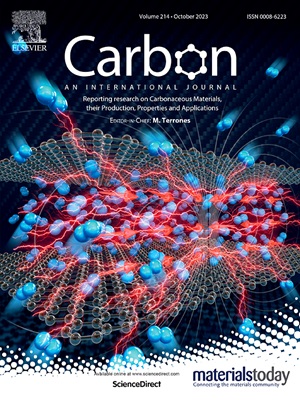原位激光辐照诱导鲁棒宏观超润滑
IF 10.5
2区 材料科学
Q1 CHEMISTRY, PHYSICAL
引用次数: 0
摘要
超润滑可以通过晶体表面之间的结构不相称的接触来实现,也可以通过创造高度被动的表面来抵消附着力。然而,制造和维护这种超润滑表面仍然是一个挑战,通常由于表面结构缺陷或对大气环境的易感性而无法实现,这使得超润滑变得脆弱。在此,我们提出了一种新的光电子超润滑(PESL)策略,通过原位激光照射非晶碳膜的接触界面,可以在潮湿环境中实现强大的宏观超润滑。我们证明了PESL不仅具有对环境干扰的高抵抗力,而且具有快速响应的特点。PESL的形成源于激光照射诱导纳米石墨烯层状界面的形成和界面处光电子的富集,导致纳米石墨烯层间产生排斥电场。PESL的发现为实现超润滑开辟了一条新途径,并为智能摩擦和机械运动控制提供了新的见解。本文章由计算机程序翻译,如有差异,请以英文原文为准。
In-situ laser-irradiation induced robust macroscale superlubricity
Superlubricity can be realized either by structural incommensurate contact between crystalline surfaces or by creating highly passive surfaces to cancel out the adhesive forces. However, fabricating and maintaining such superlubric surfaces remain challenges, often disabled by surface structural defects or susceptibility to atmospheric environment, which renders superlubricity fragile. Here, we propose a novel strategy of photoelectron superlubricity (PESL), where robust macroscale superlubricity can be achieved in ambient humid environment by in-situ laser-irradiating the contact interface of an amorphous carbon film. We demonstrate that PESL not only exhibits a high resistance to environmental disturbances but also features rapid response. The formation of PESL originates from the laser-irradiation induced formation of nanographene-layered interface and enrichment of photoelectrons at the interface, resulting in a repulsive electric field between the nanographene layers. The discovery of PESL opens a new avenue for achieving superlubricity, and provides novel insights for smart friction and mechanical motion control.
求助全文
通过发布文献求助,成功后即可免费获取论文全文。
去求助
来源期刊

Carbon
工程技术-材料科学:综合
CiteScore
20.80
自引率
7.30%
发文量
0
审稿时长
23 days
期刊介绍:
The journal Carbon is an international multidisciplinary forum for communicating scientific advances in the field of carbon materials. It reports new findings related to the formation, structure, properties, behaviors, and technological applications of carbons. Carbons are a broad class of ordered or disordered solid phases composed primarily of elemental carbon, including but not limited to carbon black, carbon fibers and filaments, carbon nanotubes, diamond and diamond-like carbon, fullerenes, glassy carbon, graphite, graphene, graphene-oxide, porous carbons, pyrolytic carbon, and other sp2 and non-sp2 hybridized carbon systems. Carbon is the companion title to the open access journal Carbon Trends. Relevant application areas for carbon materials include biology and medicine, catalysis, electronic, optoelectronic, spintronic, high-frequency, and photonic devices, energy storage and conversion systems, environmental applications and water treatment, smart materials and systems, and structural and thermal applications.
 求助内容:
求助内容: 应助结果提醒方式:
应助结果提醒方式:


